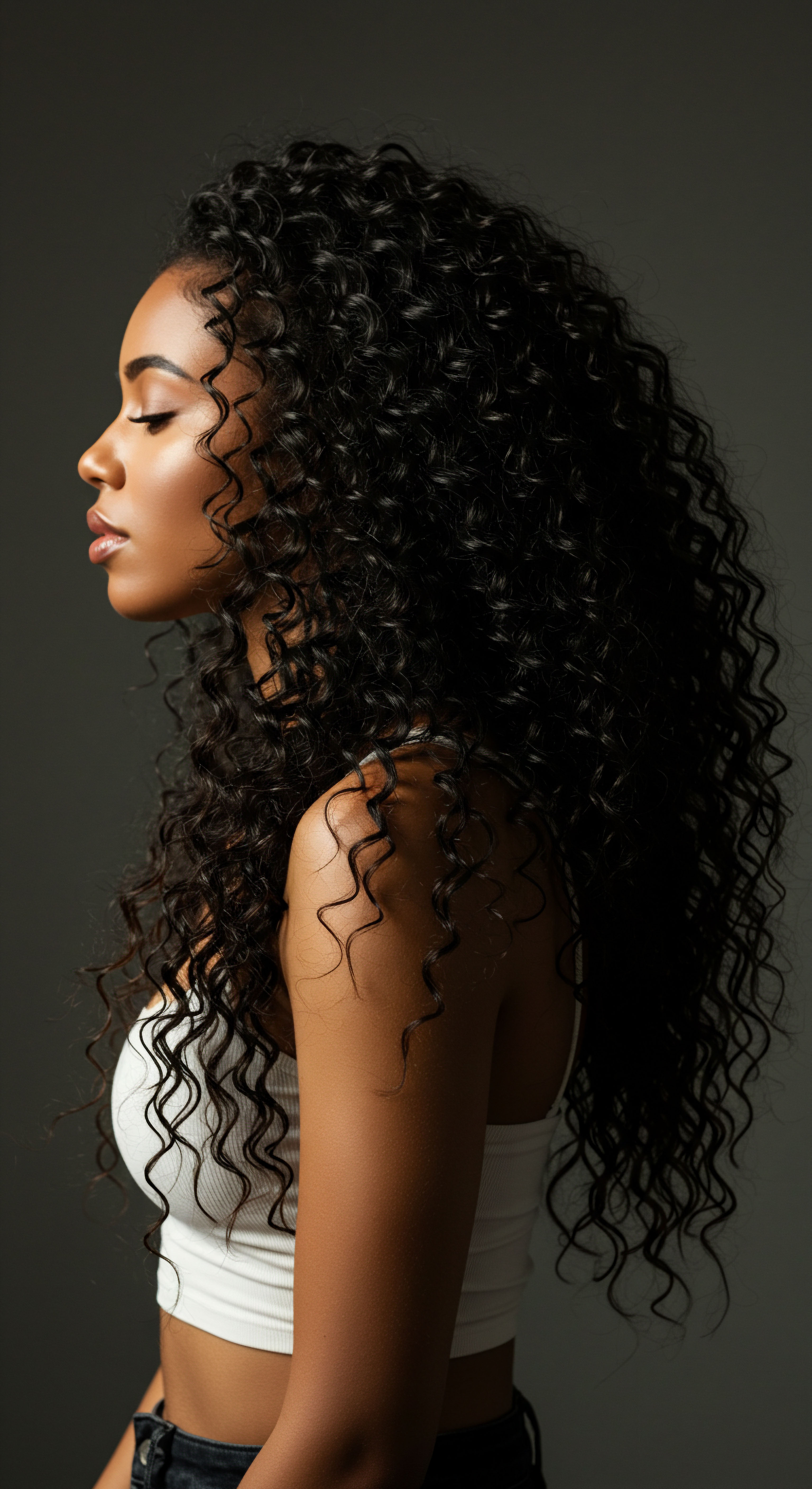
Roots
Consider the quiet rustle of leaves in an ancient grove, or the gentle descent of dusk across a slumbering landscape. There is a timeless rhythm to protection, a wisdom whispered through generations, particularly when it concerns something as deeply personal as hair. For centuries, across continents and cultures, the care of one’s hair transcended mere aesthetics.
It was, and remains, a practice imbued with identity, a connection to heritage, and a profound understanding of nature’s delicate balance. This understanding often manifested in the most elemental ways, recognizing the vulnerability of hair to the rigors of daily existence and the restorative power of gentle guardianship.
Within this enduring wisdom, smooth fabrics emerged as silent, steadfast allies. Their role was not loudly proclaimed, but rather subtly observed, a soft shield against the elements and the unseen forces of friction. From the sun’s persistent gaze to the nightly dance against rough surfaces, hair, especially hair with intricate curl patterns or delicate textures, sought refuge. These fabrics, with their yielding surfaces, offered a respite, a quiet promise of preservation that echoed through time.
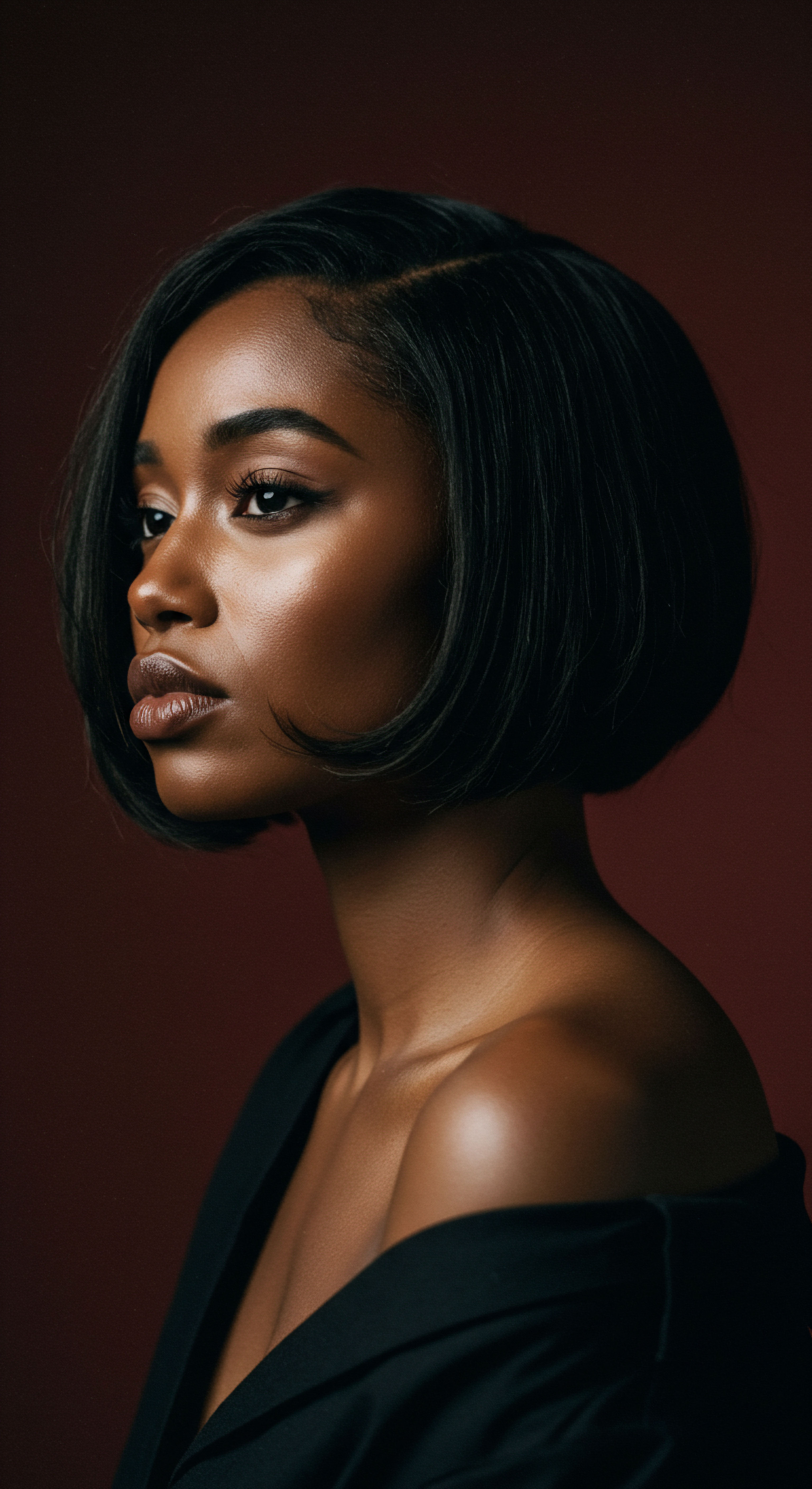
The Hair’s Delicate Architecture
Hair, in its wondrous complexity, possesses an outer layer composed of overlapping scales, known as the cuticle. Think of these as tiny, protective shingles on a roof, all facing a particular direction. When these scales lie flat and smooth, hair appears lustrous, feels soft, and retains its internal moisture with greater ease. However, when subjected to external forces, these delicate scales can lift, chip, or even break.
This disruption leads to a compromised surface, making the hair susceptible to dehydration, tangling, and breakage. Textured hair, with its natural bends and coils, presents a greater surface area for contact and potential friction, rendering its cuticle particularly susceptible to these external aggressions. The very architecture of these strands calls for a thoughtful approach to their preservation.
The intricate cuticle layer of hair, especially textured strands, is particularly susceptible to external friction and requires gentle protection.
The ancestral practices of hair care often held an intuitive grasp of this scientific reality, long before microscopes revealed the cellular intricacies of a single strand. They observed the consequences of exposure ❉ dry, brittle hair, strands that snapped with ease, and patterns that lost their definition. Their response was not born of scientific papers, but of lived experience and keen observation. They understood that a smooth surface could offer a reprieve, allowing the hair to maintain its integrity.
- Cuticle Integrity ❉ The outermost layer of hair, like overlapping scales, shields the inner cortex from damage.
- Friction Vulnerability ❉ Rough surfaces cause these scales to lift, leading to moisture loss and breakage.
- Textured Hair Considerations ❉ The natural coil and bend of textured hair present more points of contact, heightening its susceptibility to frictional damage.

The Silent Guardians of Night
Nighttime, a period often associated with rest and renewal, paradoxically presents a significant challenge to hair health. As individuals shift and turn during sleep, their hair repeatedly brushes against pillowcases. A typical person might alter their sleeping position dozens of times each night, creating a constant, low-level abrasion.
If the pillowcase material possesses a coarse or absorbent surface, this continuous rubbing can lead to considerable damage. Cotton, a widely used bedding material, while soft to the touch, has microscopic fibers that can snag and pull at hair strands, drawing out essential moisture and causing the cuticle to ruffle.
Here, the role of smooth fabrics truly shines. By wrapping hair in silk or satin, or by sleeping on pillowcases made from these materials, one creates a serene environment for the hair. These fabrics boast a remarkably low coefficient of friction. Instead of snagging, hair glides effortlessly across their surfaces.
This reduction in mechanical stress minimizes cuticle disruption, preserves styled patterns, and, crucially, helps hair retain its natural oils and applied moisture. It is a simple yet profound act of preservation, transforming the hours of slumber from a period of potential harm into a time of quiet protection.

Ancient Roots of Hair Preservation
The practice of covering hair for its protection spans diverse civilizations and eras. While specific records detailing the use of smooth fabrics exclusively for hair preservation might be scarce in some historical accounts, the general custom of head coverings for various reasons—modesty, social status, religious observance, and environmental protection—is well-documented. Within these broader traditions, the choice of material often reflected a society’s understanding of textile properties and their availability.
In ancient Egypt, elaborate wigs and natural hair were carefully styled and often adorned, suggesting a deep appreciation for hair’s appearance and condition. While explicit mentions of silk bonnets are rare for this period, the use of fine linens and other smooth cloths for wrapping and protecting hair, especially during sleep or under heavy adornments, would align with their meticulous beauty rituals. Similarly, across various African cultures, headwraps held profound cultural and practical significance.
Beyond their symbolic meanings, these coverings shielded hair from sun, dust, and environmental stressors. The selection of materials would have been influenced by local resources, but the desire for materials that did not cause undue friction or moisture loss would have been an intuitive preference.
The Silk Road, a network of trade routes, played a significant role in spreading the use of silk fabrics from East Asia to other parts of the world. In China, where silk production originated around 2700 BC, silk hair wraps were commonly used by women to protect their hair and maintain elaborate hairstyles. During the Tang Dynasty, silk became more accessible, and women across social strata utilized these wraps, often decorated to denote social standing.
Japanese traditions also included silk hair wraps, such as the “kazashi,” used to adorn and preserve intricate hairdos, particularly for geishas who needed to maintain their styles overnight. These historical precedents underscore a universal recognition of smooth fabrics as valuable tools in the enduring effort to safeguard hair.
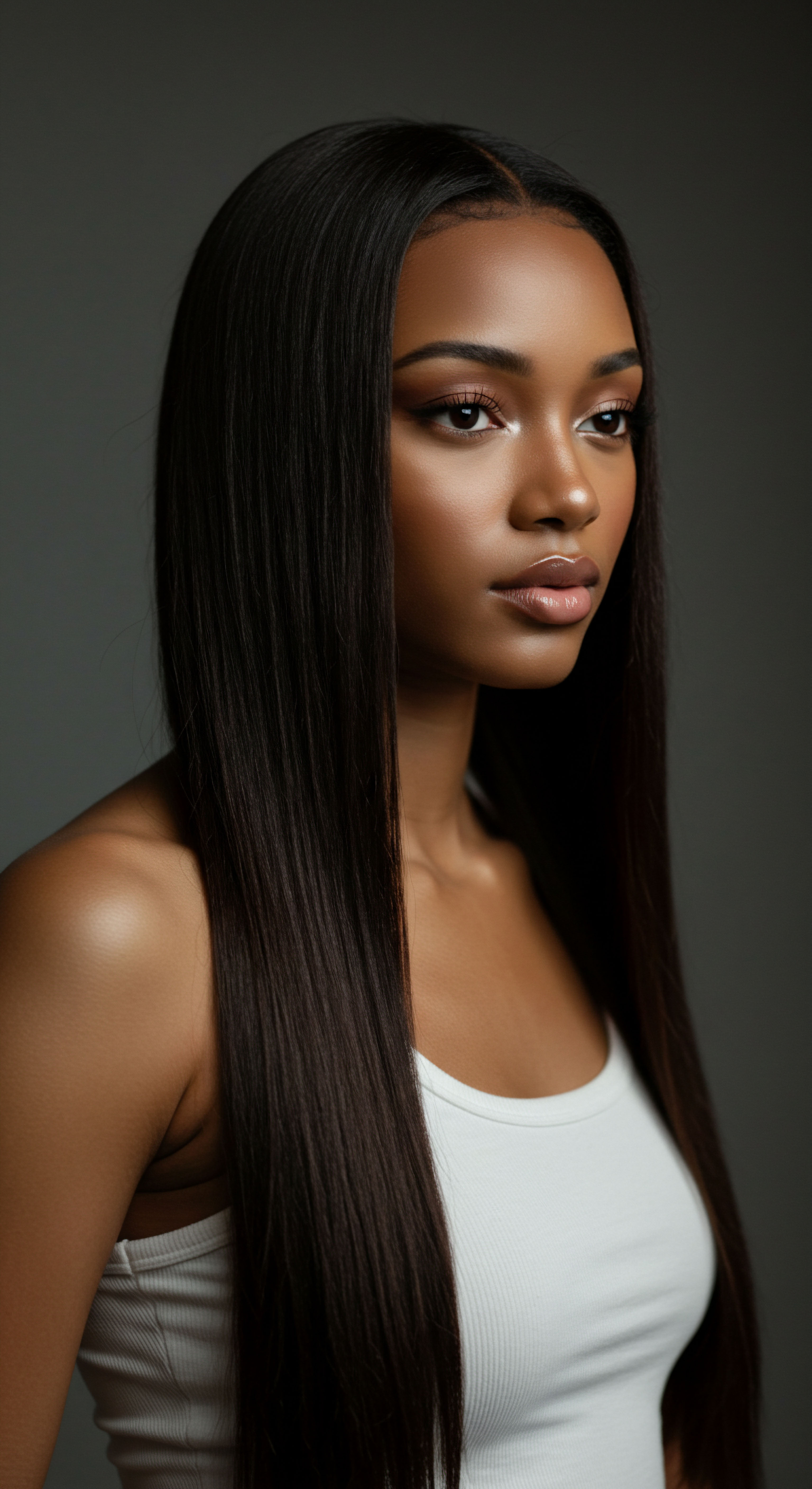
Ritual
Stepping beyond the foundational understanding of hair’s needs, we now consider the daily and nightly practices that have shaped hair care across generations. This exploration moves from the scientific basis to the practical application, inviting us into the lived experience of hair protection. It speaks to the conscious choices made, the materials selected, and the rhythms established to honor and preserve the hair. These practices, whether a simple nightly wrap or an elaborate daytime adornment, transform a basic need into a mindful ritual, a quiet act of self-care passed down through the ages.
The transition from acknowledging hair’s vulnerability to actively protecting it is where ritual finds its place. It is a space where ancestral knowledge meets daily necessity, guiding individuals toward methods that genuinely support hair health. The use of smooth fabrics in this context is not merely an accessory; it is a purposeful implement, a cornerstone of routines designed to minimize harm and maximize well-being.

The Art of the Headwrap
Headwraps, beyond their symbolic and aesthetic appeal, served as a primary form of hair protection for centuries, particularly within African and diasporic communities. These garments were not just fashion statements; they were functional tools. Materials such as fine cottons, silks, and later, satins, were chosen for their ability to cover and contain the hair, shielding it from environmental aggressors like sun, wind, and dust. For textured hair, which is prone to dryness and tangling, a headwrap provided a physical barrier that helped to retain moisture and prevent mechanical damage from external forces.
The methods of wrapping were often sophisticated, securing the hair without excessive tension, thus preventing traction alopecia—a condition where constant pulling damages hair follicles. This careful containment also reduced the need for frequent manipulation, a practice now recognized as beneficial for minimizing breakage in delicate hair types. The choice of a smooth inner lining, even if the outer fabric was more decorative or utilitarian, further enhanced the protective qualities, allowing hair to rest against a gentle surface.
Headwraps, a timeless cultural expression, provided essential hair protection by shielding strands from environmental damage and reducing the need for constant manipulation.
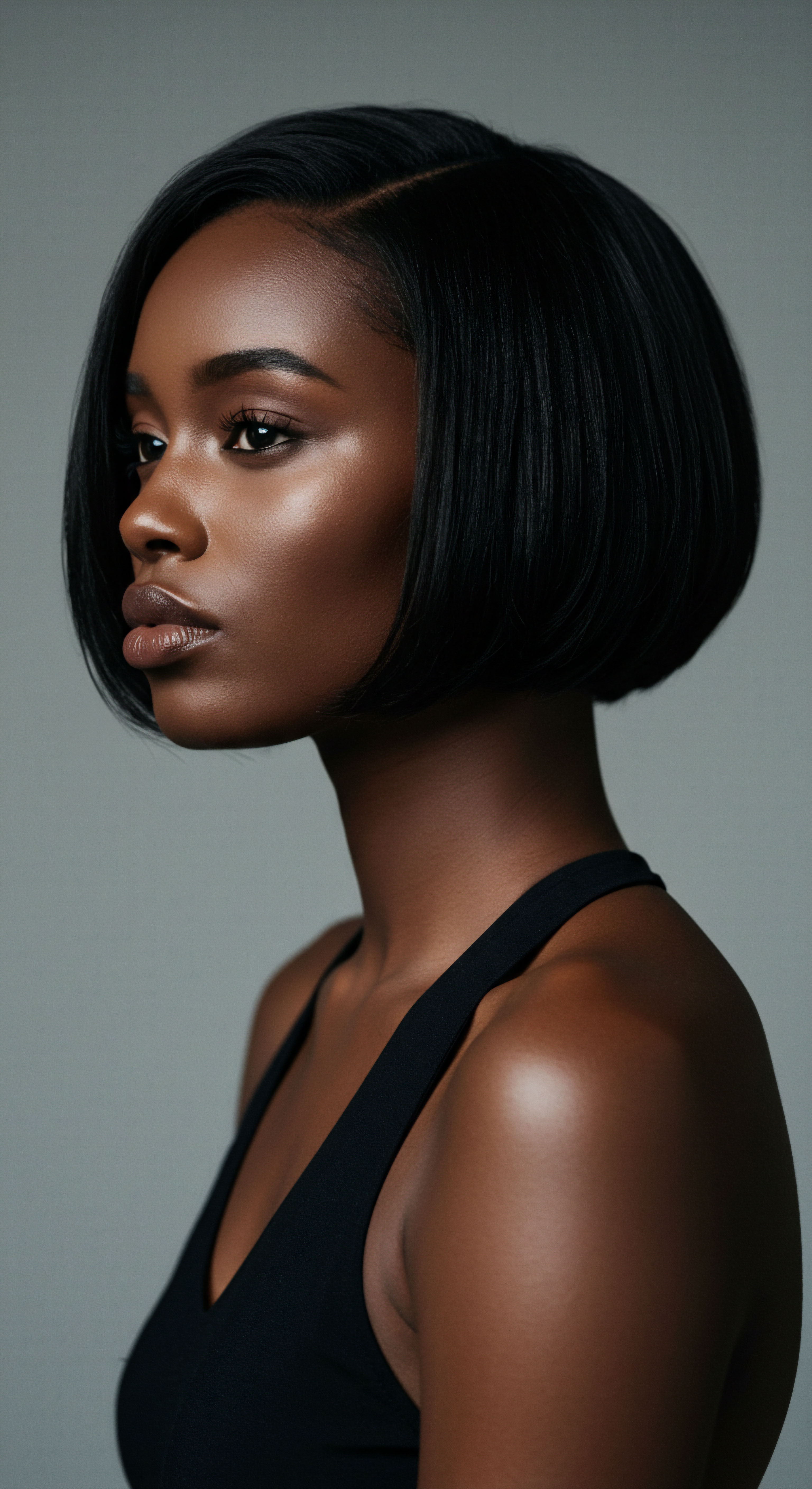
Silk and Satin Through the Ages
The historical application of silk and satin for hair protection is particularly noteworthy due to their unique properties. Silk, a natural protein fiber, and satin, a weave known for its smooth surface (which can be made from silk, polyester, or other fibers), both offer minimal friction. This characteristic has been recognized for its benefits to hair long before modern scientific inquiry.
Ancient texts and cultural practices across Asia, Africa, and parts of Europe hint at the preference for these smooth materials for hair care. From the intricate silk hair nets worn in some historical European contexts to the widespread use of silk head coverings in various Asian traditions, the understanding of their gentle touch on hair was widespread. The inherent slipperiness of these fabrics allowed hair to glide rather than snag, preserving delicate curl patterns and reducing tangles that could lead to breakage.
Beyond friction reduction, silk, being a protein fiber, is less absorbent than cotton. This property means it does not strip the hair of its natural oils or applied moisturizing products during sleep. This moisture retention is especially significant for hair types prone to dryness, ensuring that the hair remains hydrated and supple overnight. The historical adoption of these materials, often seen as luxurious, was not merely for opulence but for their demonstrable benefits to hair health.
| Fabric Type Silk |
| Key Characteristic Natural protein fiber, low friction, less absorbent |
| Hair Benefit Minimizes breakage, retains moisture, reduces frizz |
| Fabric Type Satin |
| Key Characteristic Smooth weave, low friction |
| Hair Benefit Prevents tangles, preserves styles, less abrasive |
| Fabric Type Cotton |
| Key Characteristic Absorbent, microscopic fibers can snag |
| Hair Benefit Can cause friction, lead to dryness and breakage |
| Fabric Type Smooth fabrics offer a distinct advantage over coarser materials for hair preservation. |
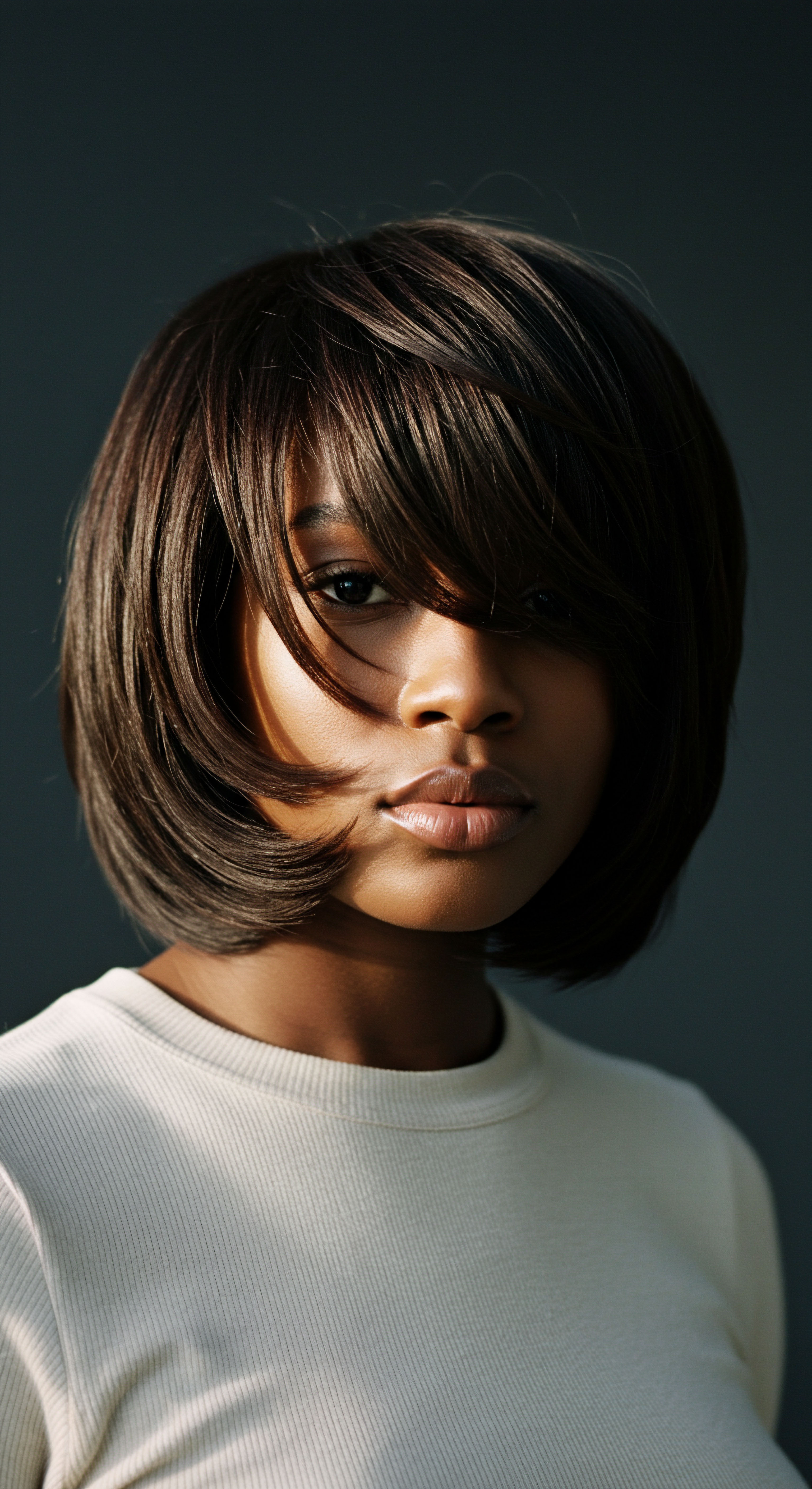
The Daily Rite of Hair Protection
The consistent application of smooth fabrics for hair protection became a daily, sometimes nightly, rite. This ritual extended beyond simple head coverings to include sleeping surfaces. The advent of silk and satin pillowcases, while seemingly a modern luxury, echoes an older wisdom about the surfaces our hair encounters for extended periods.
The choice of pillowcase material significantly influences hair’s condition upon waking. Coarse fabrics can cause significant friction as one shifts during sleep, leading to tangles, frizz, and breakage.
By consciously choosing smooth fabrics for pillowcases or by consistently wrapping hair in a silk or satin bonnet before sleep, individuals perform a quiet act of care. This practice not only protects the hair from mechanical damage but also supports the efficacy of nighttime hair treatments. When hair is shielded from friction and moisture loss, conditioners and oils applied before bed have a better chance to penetrate and nourish the strands, contributing to overall hair vitality. This mindful approach transforms a simple act into a powerful component of a holistic hair care regimen.
- Nightly Wrapping ❉ Covering hair with a silk or satin bonnet or scarf before sleep creates a protective barrier.
- Pillowcase Choice ❉ Opting for silk or satin pillowcases provides a low-friction surface for hair during sleep.
- Moisture Retention ❉ Smooth fabrics help hair retain natural oils and applied products, counteracting overnight dehydration.

Relay
To truly appreciate the enduring presence of smooth fabrics in hair care, we must look beyond the surface, exploring the intricate interplay of science, cultural significance, and the enduring human desire for well-being. This deeper examination reveals how ancient practices, often rooted in intuitive observation, align remarkably with modern scientific understanding, providing a multi-dimensional perspective on what might appear to be a simple act of protection. It is within this intersection that the profound wisdom of past generations speaks to our contemporary understanding of hair health.
This section aims to bridge the gap between historical practices and current research, offering a more complex, science-backed view of how smooth fabrics safeguard hair. We will delve into the measurable effects, the cultural contexts that shaped these traditions, and the underlying mechanisms that render silk and satin such potent allies for hair, particularly textured hair.

Beyond the Surface Fiber Science
The efficacy of smooth fabrics in protecting hair is not merely anecdotal; it is grounded in the science of tribology, the study of friction, lubrication, and wear. Hair, at a microscopic level, is covered by a cuticle layer composed of overlapping scales. When hair rubs against a rough surface, these scales are lifted and abraded, leading to damage.
Smooth fabrics, like silk and satin, possess a significantly lower coefficient of friction compared to materials such as cotton. This means there is less resistance when hair slides across their surface, minimizing the mechanical stress on the cuticle.
A study published in the Journal of Cosmetic Dermatology, for instance, indicated that a smooth surface can lessen hair friction by as much as 43%. This measurable reduction directly translates to less cuticle damage, fewer snags, and a marked decrease in breakage and split ends. For hair with tighter curl patterns, which inherently possesses more points of contact along its length, this reduction in friction is even more impactful, as it helps to maintain the integrity of the coil and prevent the tangling that often leads to breakage.
The inherent structure of silk, a protein fiber, also plays a role in its moisture-retaining capabilities, being less absorbent than plant-based fibers like cotton. This property helps hair preserve its natural lipid layer and applied hydrators, contributing to overall hair resilience.
Modern tribology confirms that smooth fabrics, particularly silk, significantly lessen hair friction, preserving cuticle integrity and moisture.
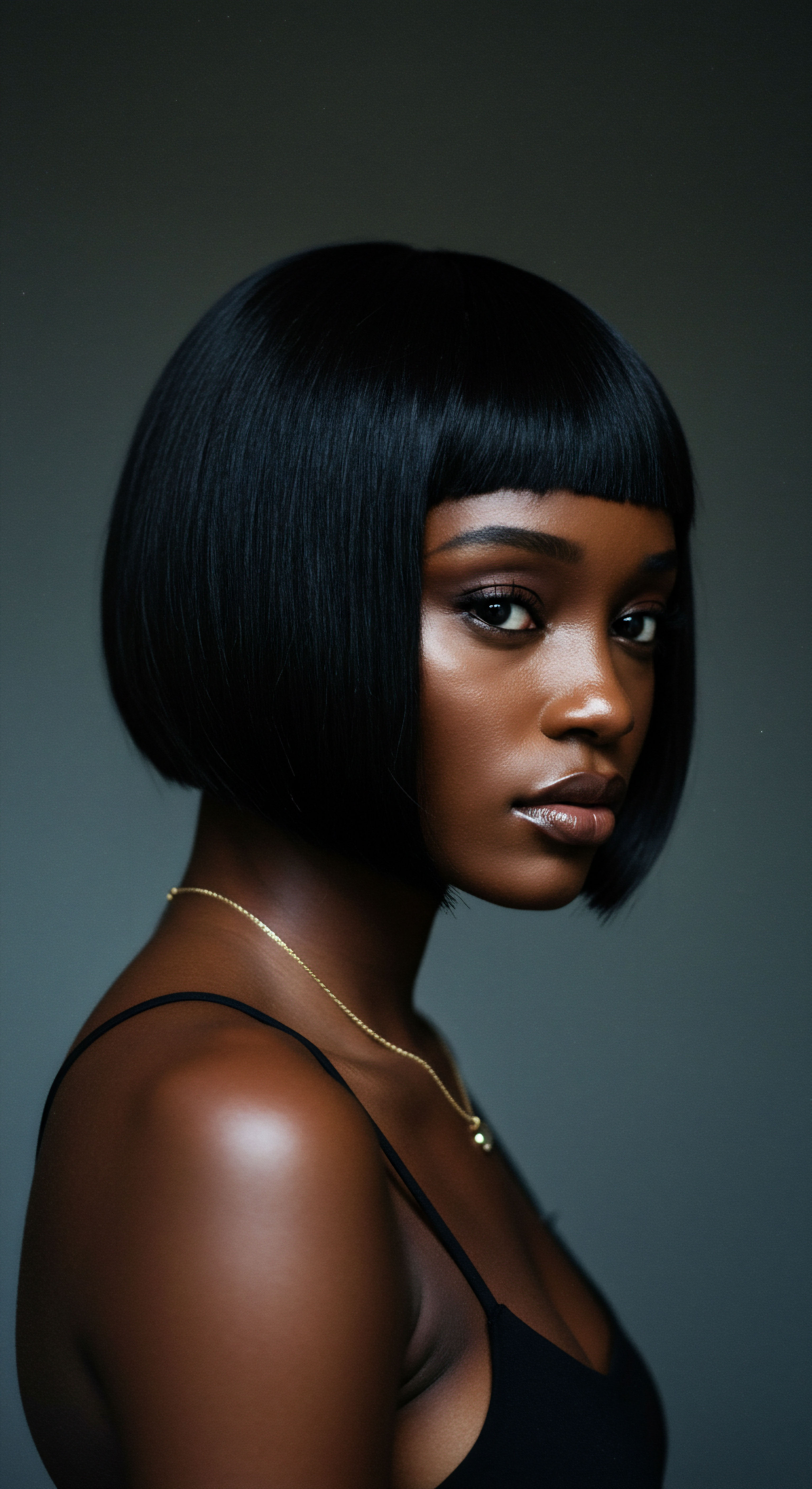
The Sociocultural Language of Adornment
Beyond their physical benefits, head coverings made from smooth fabrics have long carried deep sociocultural meanings. In many African and African diaspora communities, headwraps are not just protective styles; they are expressions of identity, status, spirituality, and cultural continuity. The choice of fabric, the manner of tying, and the occasion for wearing all convey unspoken messages.
During periods of enslavement and oppression, the forced shaving of hair was a deliberate act of dehumanization and cultural erasure. In response, head coverings became powerful symbols of resistance, resilience, and the preservation of heritage.
This cultural context elevates the practice beyond simple hair care to a profound act of self-affirmation. The smooth fabric, while serving its practical purpose of protection, also became a canvas for personal and collective narratives. The quiet act of wrapping one’s hair in a soft, gentle cloth was a daily reminder of beauty, dignity, and a connection to ancestral practices, even in the face of systemic attempts to dismantle such connections. The tradition persists today, not solely for protection, but as a vibrant celebration of identity and a continuation of a rich legacy of hair artistry and care.
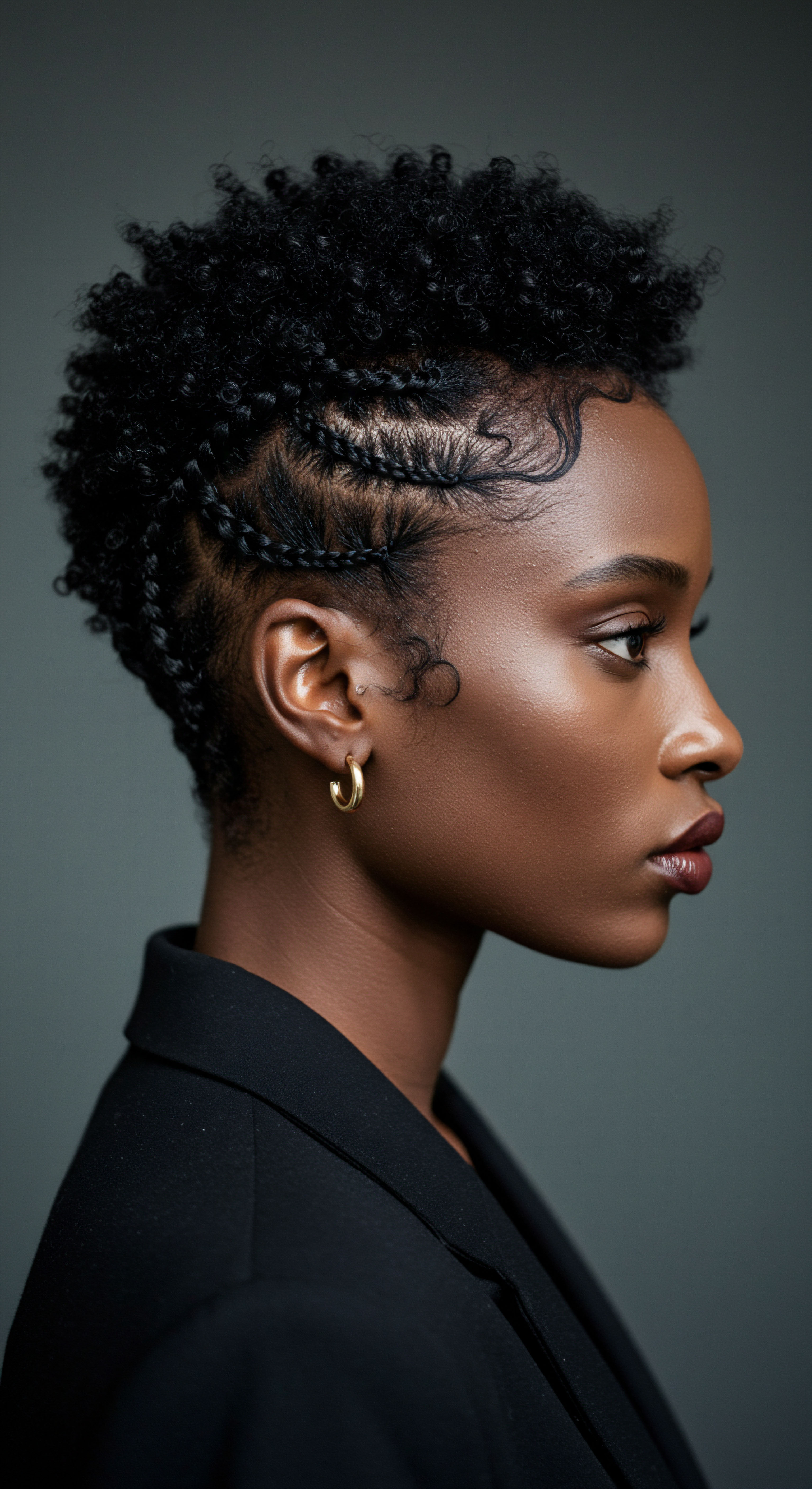
Why Did Historical Cultures Prioritize Hair Protection with Fabrics?
Historical cultures, particularly those with a deep appreciation for hair as a symbol of identity, health, and status, intuitively understood the vulnerability of hair to environmental factors and daily manipulation. Without modern scientific instruments to visualize cuticle damage, they relied on observable outcomes ❉ hair that felt dry, looked dull, broke easily, or resisted styling. The prolonged exposure to sun, wind, and dust could lead to significant weathering of the hair shaft. Moreover, many historical hairstyles were elaborate and time-consuming to create, making their preservation a practical necessity.
Smooth fabrics offered a solution to these challenges by providing a physical barrier against environmental aggressors and minimizing the friction that occurred during movement, especially during sleep. This prioritization stemmed from a holistic view of hair as integral to one’s overall well-being and social presentation.

Preserving Heritage and Health
The historical adoption of smooth fabrics for hair protection is a testament to an enduring wisdom that transcends eras. It highlights a continuum of knowledge, from ancient empirical observation to modern scientific validation. The deliberate choice of silk and satin for bonnets, headwraps, and pillow coverings underscores a universal understanding of hair’s delicate nature and the need for a gentle approach to its preservation. This practice is not a fleeting trend but a deeply rooted tradition, especially pertinent for textured hair, which benefits immensely from reduced friction and maintained moisture levels.
The benefits extend beyond the physical realm of reduced breakage and improved moisture balance. The ritual of nightly hair protection, often involving the careful wrapping of strands in a soft fabric, can become a moment of quiet reflection and self-care. It provides a sense of security and continuity, connecting individuals to a lineage of care practices.
This act, whether performed in a bustling modern city or a quiet historical village, carries the same intention ❉ to honor and safeguard the crowning glory, ensuring its vitality and beauty for generations to come. The continuity of this practice speaks volumes about its effectiveness and its deeply personal significance.
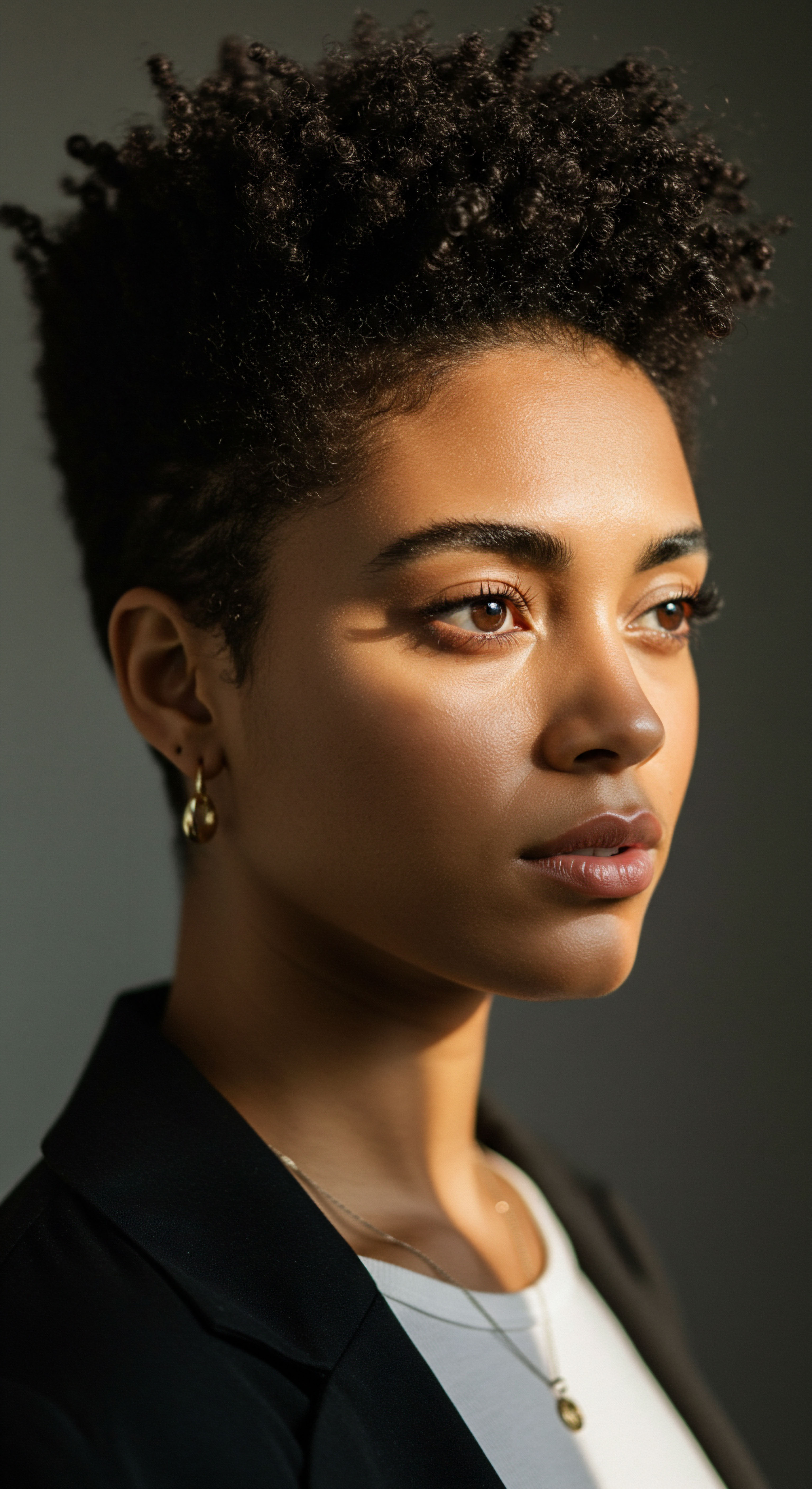
Reflection
As we consider the historical whispers of smooth fabrics guarding hair, a quiet appreciation for timeless wisdom settles. The simple act of choosing a gentle surface, whether for a nightly repose or a daytime adornment, speaks to a deep, enduring understanding of hair’s inherent grace and its need for tender care. This journey through history reveals not just practices, but a profound connection to self and heritage, a testament to the quiet power of mindful preservation. The softness of silk, the subtle sheen of satin—these are more than mere materials; they are echoes of an ancient promise, a continuing invitation to nurture and honor our strands.
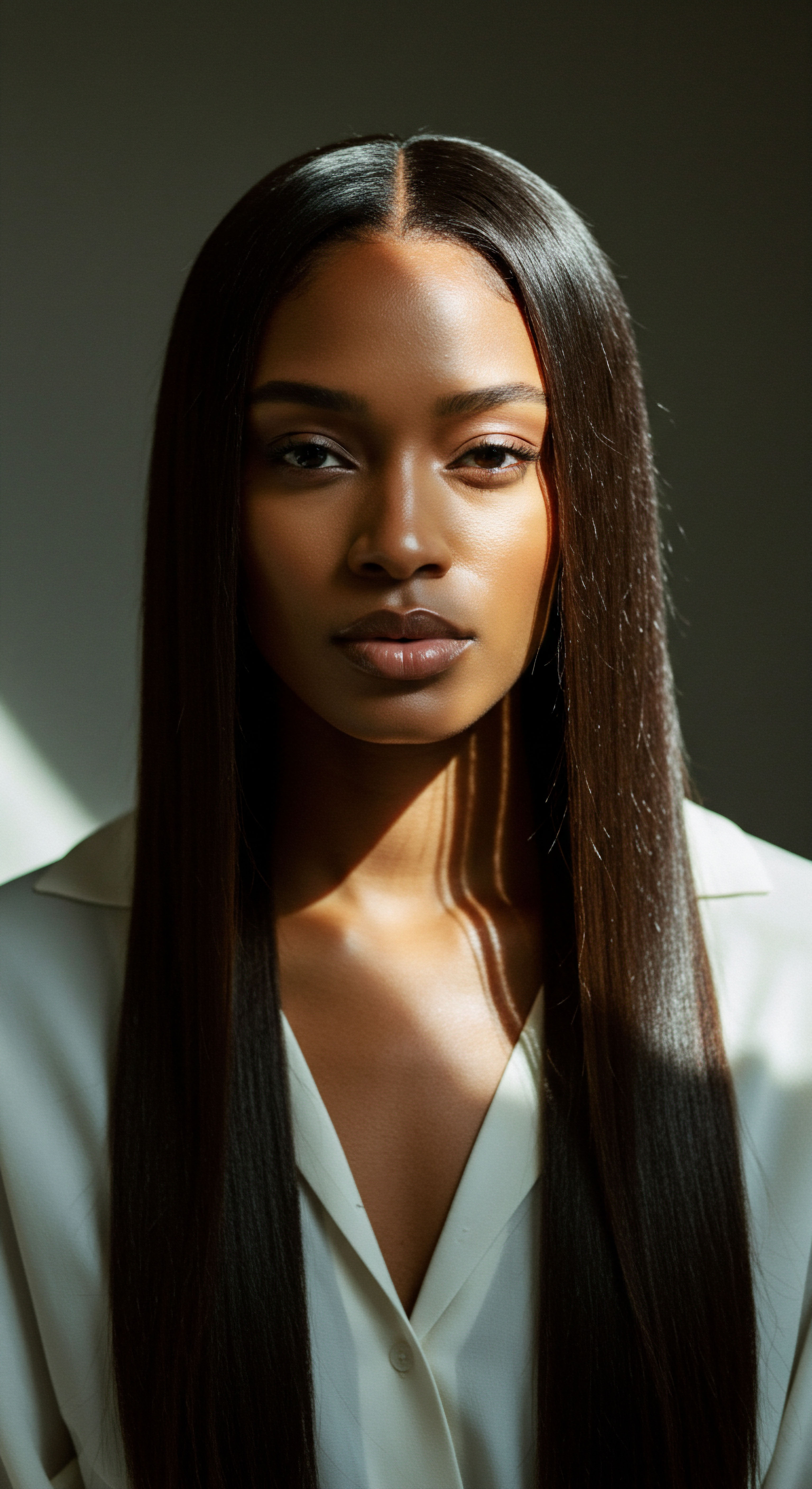
References
- Schwartz, A. M. & Knowles, D. C. Frictional Effects in Human Hair. Journal of the Society of Cosmetic Chemists, 1963.
- Bhushan, B. et al. Friction Dynamics of Straight, Curly, and Wavy Hair. Journal of Cosmetic Science, 2014.
- El-Messiry, M. et al. Friction Coefficient and Electric Static Charge of Head Scarf Textiles. Journal of Textile and Apparel, 2017.
- Journal of Cosmetic Dermatology. Smoother fabrics like silk help prevent hair shaft damage caused by repeated friction. (Specific study not fully cited in search results, but referenced by multiple sources).
- DeLauder, S. F. Considering issues of Racial Bias in Drug Testing Where Hair Is the Matrix. Transforming Anthropology, 2003.
- Davis-Sivasothy, A. The Science of Black Hair ❉ A Comprehensive Guide to Textured Care. Saga Publishing, 2011.
- Mizuno, A. et al. Frictional Properties of Human Hair Fibers. Journal of the Society of Cosmetic Scientists, 2006.
- Robbins, C. R. Chemical and Physical Behavior of Human Hair. Springer, 2012.
- Hunter, L. Human Hair ❉ Its Structure, Properties, and Potential. Textile Research Journal, 2007.
- Pollard Rowe, A. The Art of the Ancient Andes. Museum of Modern Art, 1986.